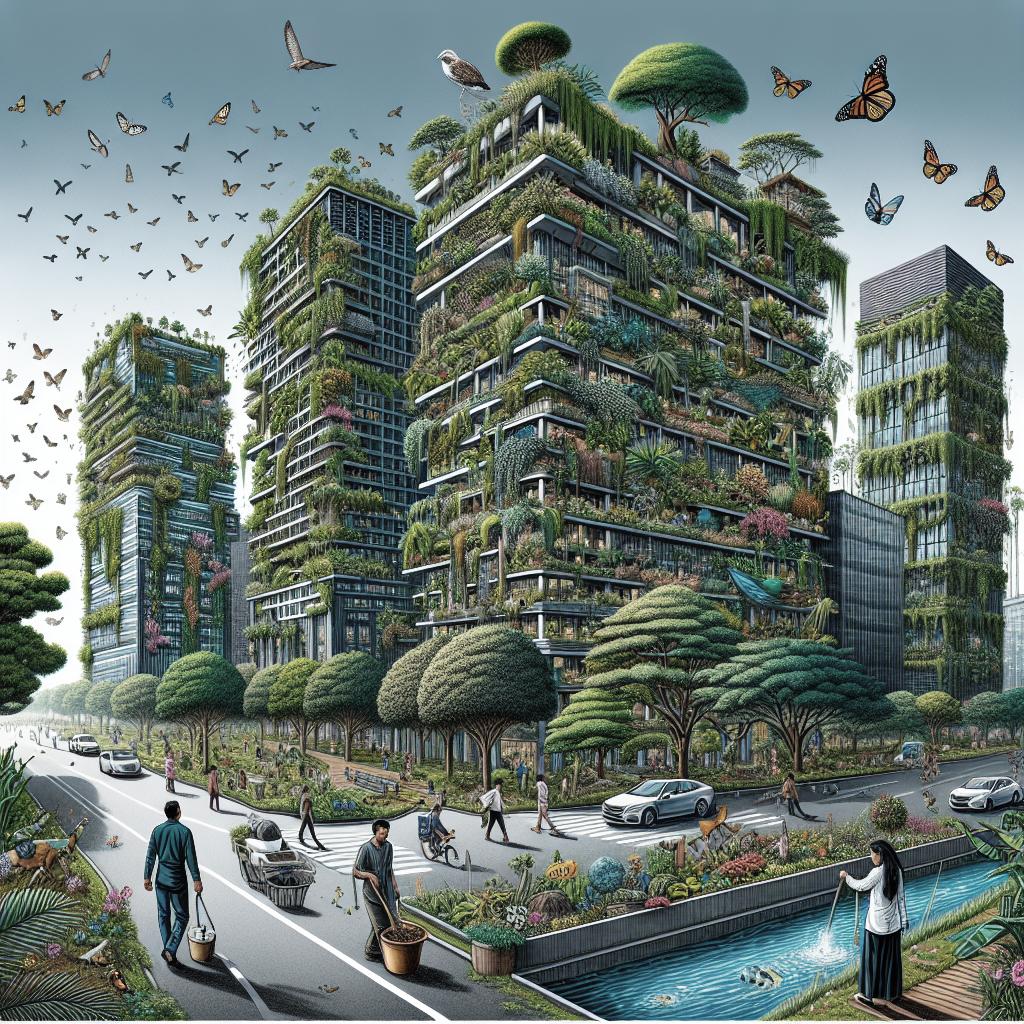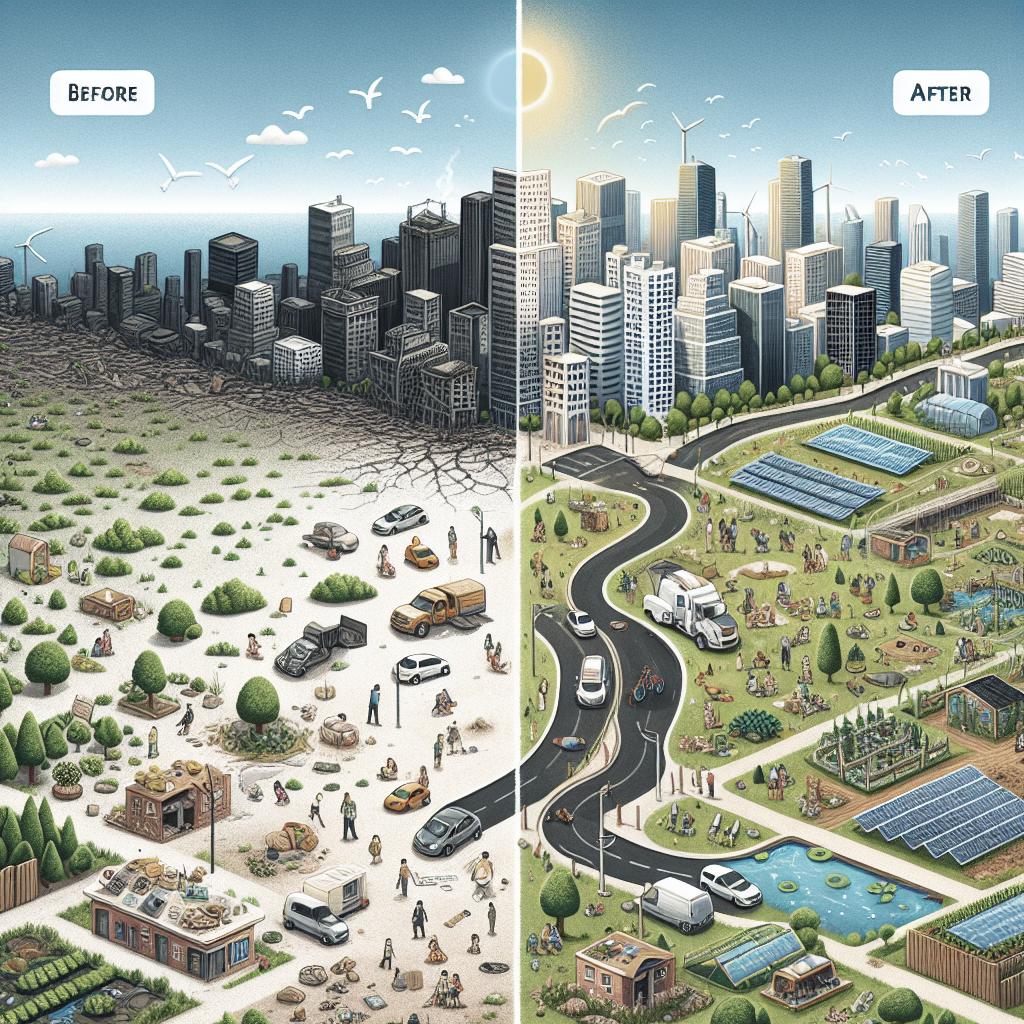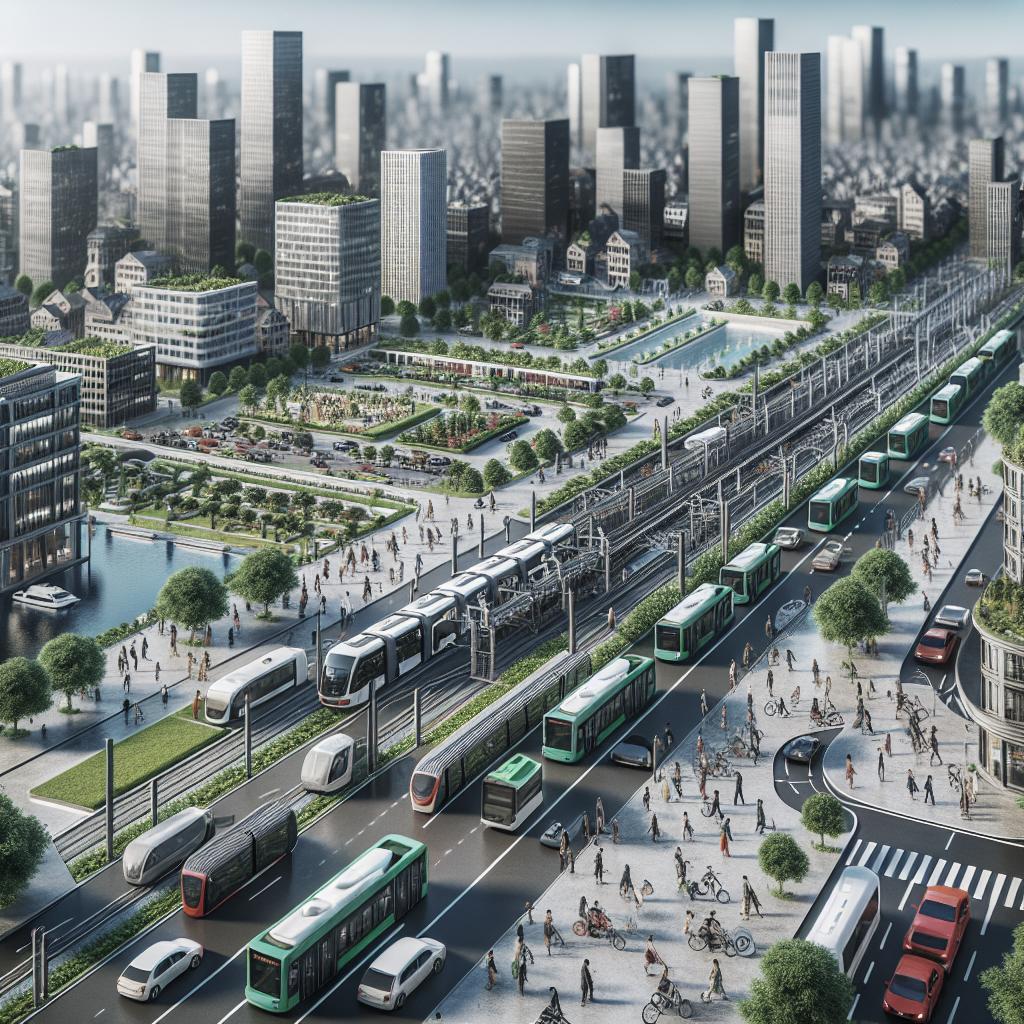<>
Enhancing urban biodiversity is an essential step towards creating more resilient cities that can better adapt to climate change while providing numerous ecological, economic, and social benefits. This blog post will explore different approaches to improving biodiversity in urban areas, including the importance of wildlife corridors, organic maintenance methods, native planting strategies, and mindful practices concerning non-native predators. We will delve into practical steps such as utilizing existing green spaces effectively and integrating artistic interventions into urban planning. By the end of this article, you will have a comprehensive understanding of actionable ways to foster biodiversity in city landscapes, illustrated with relevant examples and expert interviews.
Topics
Enhancing urban biodiversity through various strategies and practices.
Regions
The approaches discussed in this blog can be applied globally, with potential region-specific adaptations.
More From E360
Explore additional content on enhancing biodiversity and sustainable urban planning.
Here are 5 Ways to Increase Biodiversity in Urban Landscapes
1. Provide Wildlife Corridors and Connections Between Green Spaces
Urban development often fragments habitats, isolating wildlife and reducing movement between green spaces. Wildlife corridors combat this by connecting disparate green areas, allowing species to migrate, forage, and find mates. Cities can integrate these corridors through park systems, green roofs, and riverbanks. For instance, Singapore’s Park Connector Network comprises a series of green pathways that link parks and nature reserves, promoting biodiversity and giving residents more interaction with nature. Establishing these connections goes beyond mere habitat extension; it improves genetic diversity, which is vital for species adaptation and survival. Studies indicate that connected green spaces mitigate the urban heat island effect, reduce flood risks, and improve air quality. Such corridors can be enhanced with native plants and water features, making them practical and aesthetically pleasing.
2. Use Organic Maintenance Methods and Cut Back On Lawns
Traditional lawn maintenance relies on synthetic fertilizers and pesticides, which can harm local wildlife and degrade soil health. Switching to organic maintenance methods, such as composting and manual weeding, promotes a healthier ecosystem. Beyond garden upkeep, these practices can extend to public green spaces and urban farms, increasing biodiversity and sustainability in cities. Replacing portions of lawns with biodiverse plantings like wildflower meadows also benefits urban biodiversity. Lawns generally support less wildlife compared to varied plant structures, which provide habitats and food sources for a range of species. Countries like the UK are pioneering this approach, turning once monocultural lawns into vibrant, multipurpose spaces that support bees, birds, and butterflies.
3. Use a Native Plant Palette and Plant Appropriately
Native plants have evolved over millennia to thrive in their specific regions, offering better support for local wildlife than exotic species. Incorporating native plants into urban landscapes ensures that the local fauna has access to familiar food sources and habitats. Cities like Chicago have adopted native plant policies in public and private projects, improving urban biodiversity while reducing maintenance costs and water usage. In addition to using natives, it is crucial to plant them appropriately. This means considering the specific needs of each plant concerning light, soil, and water to ensure they thrive without excessive human intervention. Creating layered plantings with trees, shrubs, and groundcovers mimics natural ecosystems, providing shelter and sustenance for diverse species.
4. Utilize Existing Green Space Connections
Many cities already possess green spaces that can be optimized to aid biodiversity. By identifying and enhancing these areas, municipalities can foster more significant ecological networks without extensive new developments. Initiatives like the High Line in New York City have transformed underused urban areas into thriving green spaces that support local flora and fauna. Strategies can include retrofitting existing parks with native plantings, introducing pollinator gardens, or simply allowing sections of parkland to revert to a more natural state. Community involvement in these projects can also increase public awareness and support for biodiversity efforts, making urban areas not only greener but more connected to their residents.
5. Be Mindful of Non-Native Predators
Urban environments can sometimes introduce non-native predators that disrupt local ecosystems. Species such as domestic cats and certain bird species can threaten native wildlife. Methods to mitigate these impacts include public education on responsible pet ownership and the introduction of programs to control invasive species. Cities like Auckland have implemented pest control measures to protect native birds from invasive predators, showcasing a proactive approach to preserving biodiversity. Education campaigns can also encourage citizens to participate in these efforts, fostering a communal responsibility towards maintaining a balanced urban ecosystem.
More Top Articles on LAN
Discover more insights and strategies for enhancing urban biodiversity and sustainable living.
Recommended Reading
For more detailed explorations on urban biodiversity and related topics, check out these recommended links and resources.
Related Articles
Find articles related to urban planning, sustainability, and biodiversity to expand your knowledge further.
Vectorworks Design Summit Field Report Part II: Interview with Dr. Biplab Sarkar, CEO
Dr. Biplab Sarkar discusses the role of design software in modern urban planning and fostering biodiversity.
Anova Grant for Emerging Professionals 2019
Highlighting grant opportunities for emerging professionals committed to improving urban biodiversity.
Can Art Revive a Dead Urban Space?
Exploring the intersection of art and greenery in breathing life into neglected urban areas.
Malmö’s New Bustling Commuter Hub Moves 37,000 People a Day
An in-depth look at Malmö’s sustainable commuter hub and its integration of green spaces.
Is Our Flagship Publication Sending Out the Right Message?
Reflecting on the impact of our publication on public awareness and support for urban biodiversity.
How to Transform SketchUp models into Digital Hybrid Watercolor Renderings
A guide to enhancing urban planning presentations with artistic digital renderings.
The 4th International Urban Sketching Symposium
Recap of the symposium that brings together urban sketchers to promote cityscapes’ vibrant details.
Emerald Ash Borer Found in New Host
Updates on invasive species and the measures being taken to protect urban forests.
Tuesday Tutorial: Now in 3D!
Learn how 3D modeling can help in planning and visualizing biodiverse urban landscapes.
2 Comments
User-generated responses discussing the article’s content and sharing additional insights.
Leave a Reply Cancel Reply
Your thoughts and comments are welcomed; share your experiences and suggestions below.
| Key Areas | Actions |
|---|---|
| Wildlife Corridors | Connect green spaces to facilitate animal movement and improve genetic diversity. |
| Organic Maintenance | Adopt organic practices and reduce lawns to promote healthier, biodiverse environments. |
| Native Plant Palette | Use native plants and plant them appropriately to support local wildlife and reduce upkeep. |
| Existing Green Spaces | Optimize and enhance current green areas to create more interconnected ecosystems. |
| Non-Native Predators | Implement controls and public education to manage non-native predators and protect local species. |
By integrating these strategies, urban landscapes can transform into thriving ecosystems that support diverse species while enhancing the quality of life for city dwellers. The ongoing efforts to promote urban biodiversity will not only benefit present generations but also contribute to a sustainable and resilient future.


